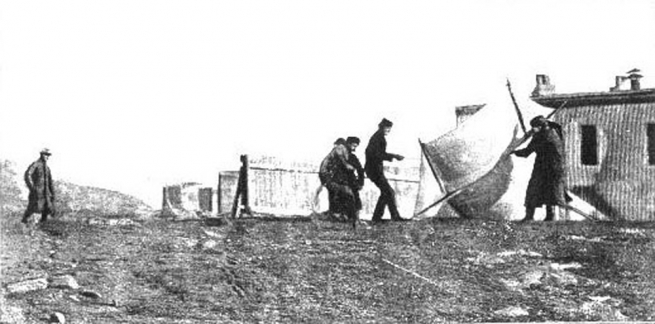
I received my first radio at the age of ten. Battery-powered and small enough to be handheld, it had an antenna long enough to pick up signals in my southern Ontario bedroom from exotic downtown Detroit. It arrived in my life on Christmas Day as a present from my Uncle Ted. I still remember the first delicious taste of personal autonomy late that Christmas night, as I snuck the radio into bed and turned the dial, discovering that my new-found freedom would bring me sound worlds that, as a ten-year-old, I could only dream of visiting: classical music, radio drama, experimental music, world music, and radio art.
What I was tuning into that night was a century-old technology that had evolved from Morse code to audio broadcasting, and had played a pivotal role in social and technological developments. Mid-twentieth-century radio stations housed cutting-edge audio technology not available to the public and served as de facto studios for artists and engineers. Pierre Schaeffer began his early musique concrète experiments in the 1940s using the recording equipment available at Radiodiffusion Française (French Radio Broadcasting). Karlheinz Stockhausen’s pioneering electroacoustic work Gesange der Jungelinge (1955–56) was realized in the West German Broadcasting studios. We have our own Canadian claim to the development of the radiophonic genre in Glenn Gould’s Solitude Trilogy (1967–77), made possible by Gould’s longtime association with the Canadian Broadcasting Corporation.
At a time when affordable sound recording and reproduction were still in-accessible, broadcast studios—often with their own radio orchestras—commissioned, performed, recorded, and broadcast the latest in new music. The CBC’s five radio orchestras were responsible for providing income to many Canadian composers who actually wrote music for a living. The CBC Vancouver Orchestra was, at the time of its demise in 2008, the last radio orchestra in North America. Radio-based recording engineer David Quinney and producer David Jaeger, through their work on CBC radio’s Two New Hours, were almost single-handedly responsible for the professional recording of Canadian new-music premières until the cancellation of the show in 2007.
The termination of the CBC Vancouver Orchestra and of Two New Hours not only ended two Canadian radio institutions but also marked the end of a phase in the ongoing evolution of radio. Their disappearance from the radio world leaves a gaping hole in the experimental-music resources of Canadian composers. But my peers and I haven’t relied on radio-orchestra commissions for our livelihoods, and in turn, the next generation of composers will not rely on radio corporations with large resources to record and disseminate their work, opting instead to record and microcast their own works with the technologies available to them. They have already leap-frogged over the intermediate radio developments of Internet streaming and satellite radio. Radio is dead! Long live radio!
In Re-Inventing Radio, reviewed by Allison Cameron, the editors make the case that radio ought to be no longer just about broadcasting but more about a communications space. What was once a one-way transmission space is being morphed by radio artists into a live feedback loop where listeners become active participants in the broadcast. Among these radio artists are ones practicing in Canada today, some of whom are featured in this issue. Anna Friz’ experience in community radio has led her to understand radio as sending and receiving, the radio medium providing an environment for interaction between programmer and listener. LoK8Tr’s upcoming project disseminates its audio and visual elements over the social networking platforms of Web 2.0, inviting the audience to respond in real time. Avatar Metaverse Orchestra builds instruments and performs together telematically on the virtual-reality platform, Second Life.
This is a world Tesla and Marconi couldn’t have imagined as they filed patents for their radio inventions. Even now, decades after my first late-night radio-listening session, I still have my nightly radio ritual, only I now spin the touchpad on my iPod, making a choice between music, podcasts, audiobooks, and sound art. What has changed? Everything and nothing. I have lost the sense of community, knowing that with radio-on-demand I am listening alone to any one sound at any point in time. Sure, other people have heard what I may be listening to, but we are not listening to it simultaneously, our ears pressed to our transistor radios under our individual bedcovers. Even more will change in the future, and radio will lead the way. I will embrace the new feedback loops of radio, and I have no doubt that, in the foreseeable future, my avatar will be sitting in a virtual chair joined by my avatar friends, listening to and creating microproduced radio together.
Image: Marconi launches an antenna at Signal Hill, Newfoundland. Image by: Public domain.